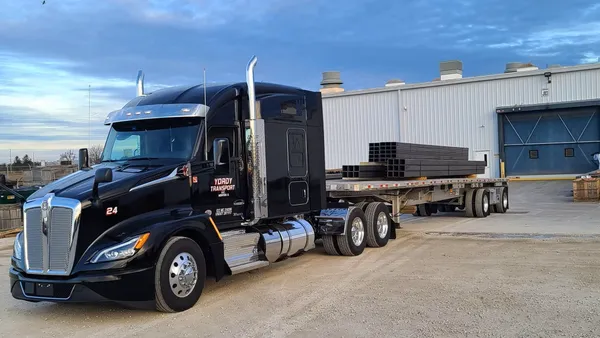Dive Brief:
- Beginning in April, BNSF Railway will offer $300 per car discounts to ethanol shippers, provided they agree to use the new DOT 117s rather than the DOT 111s, Reuters reported Wednesday. The DOT 111s, which are prone to punctures, have been involved in 16 accidents since 2006, resulting in numerous fires and 48 deaths.
- Though the mandatory transition to the DOT 117s from the 111s is not required until 2025 to become fully implemented for ethanol shipments (considered less flammable than crude oil), BNSF is an early adopter due to its high-deductible insurance intended as a safeguard against catastrophes. Derailments from accidents also create extra costs due to line closures and delay of deliveries.
- Skepticism about the safety of DOT 111s rose along with crude rail shipments from the Bakken fracking fields of North Dakota.
Dive Insight:
Railroad tank cars that transport flammable and hazardous materials including crude oil and ethanol are subject to meticulous examination in order to establish the highest available standards of safety. In the process, components such as the quality and weldability of the steel used in construction are examined. According to an FRA (Federal Railroad Association) study, previous research demonstrated that tank car steel properties were not consistent, in that they did not follow definite patterns.
As a result of that study as well as others, in 2015 the DOT released a final rule establishing new, tougher standards for tank cars carrying certain hazmat liquids, including ethanol and crude oil. The new standards are known as DOT-117 specifications. The DOT- 117 cars require increased thermal blanket protection, as well as top fittings protection on tank car retrofits. These improvements will help diminish the effects of rail accidents.
While the numbers of accidents mentioned above may seem high, in fact, more than 90% of train-related fatalities occurred as a result of trespassing. Only 14% of accidents recorded in 2015 were equipment based, while fatalities based on equipment failures have steadily declined since 2005.














